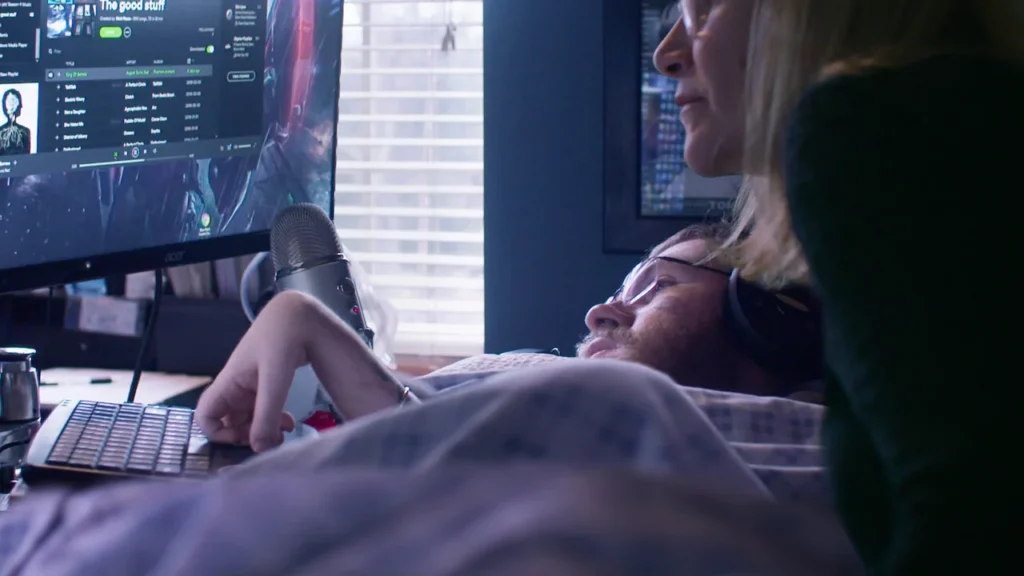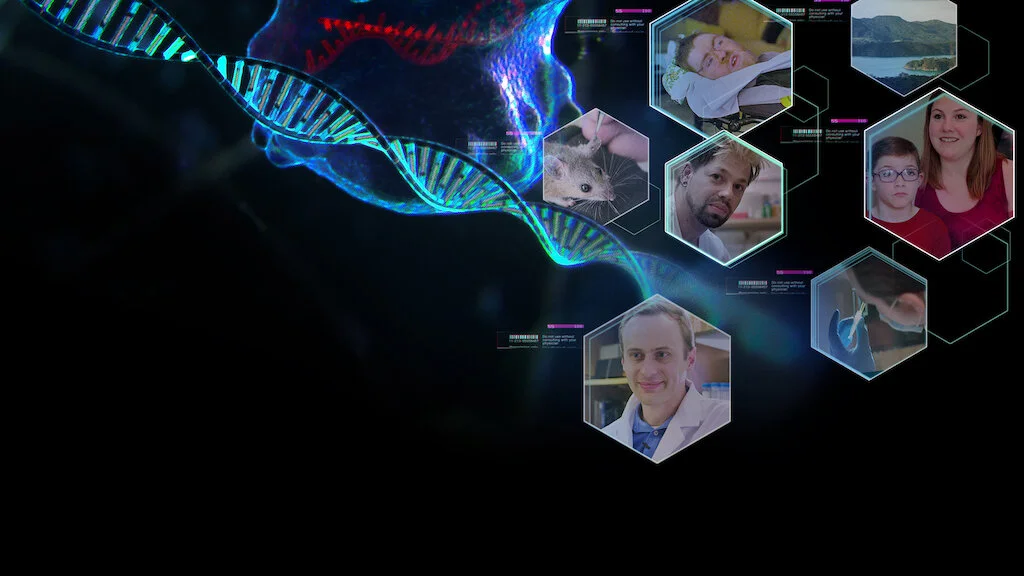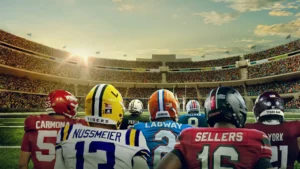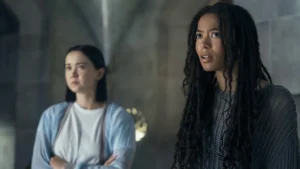We are entering mysterious times, I’m telling you. This Netflix science series, aptly titled Unnatural Selection, delves into gene editing, from scientists in expensive labs to biohackers trying experiments in their garages. I’ve broken down each episode of the documentary series and given my overall thoughts.
Episode 1 – “Cut, Paste, Life”
I remember in Fringe when Walter is asked about the ethics of his experiments, and he cruelly responds to his assistant that “I am the God of this laboratory”. That scene has stayed in my brain ever since, and I’ve always wondered — if we can modify our genetics in advancing technology, can it ever be deemed ethical?
Episode 1, “Cut, Paste, Life” explores that notion surrounding gene editing; it opens up with parents whose son is having genetic issues of his own. Due to missing genes inherited from his parents, he will eventually become blind. Unnatural Selection immediately punts the question to the audience — if we ever modified this boy’s genes to prevent him from becoming blind, is that wrong? It’s hard to argue against improving one’s life. I know most parents would chop their own hands off to allow it to happen
But there’s a line isn’t there? And that’s what the first episode debates. Unnatural Selection states this is not a country by country debate, but individuals. Outside of modern laboratories, some individuals have the ability to experiment with editing and inserting genes. While developing worlds may be behind scientifically, it only takes one self-proclaimed scientist to set up shop and make this a reality. We often consume Film & TV that toy with advancements almost as if it was a future possibility, but it is evident in “Cut, Paste, Life” that this reality has already been birthed.
Once the documentary reaches halfway through, I did wince at the scientists exploring this ideology on their own and presenting it to skeptical audiences who question the ethics. The Netflix series does not do a grand job in amplifying their argument but makes them look power-hungry to be a creator, a world-changer… a God. When one scientist decides to inject himself with protein to modify his genes, that’s when I wondered if off-cuff side-street modifications are the way forward.
But in the same nutshell, would it be so bad if we modified the human race, so we never had bad eyesight, or we were naturally strong? It would undoubtedly make the course of our evolution interesting. One thing is for sure — if we can ever eradicate harmful diseases, then we’d have a fight on our hands to prevent ourselves from becoming Gods. Episode 1, “Cut, Paste, Life” leaves you pondering the what-ifs.
Episode 2 – “The First to Try”
Episode 2 explores gene therapy and the risks associated with it. What I found most alarming about “The First to Try” is that gene therapy has a high cost of entry. There are campaigners within this episode that despise the Big Pharma companies, and rightly so — there is an argument that these companies emotionally blackmail you to force yourself in a financial predicament to save a loved one.
Josiah Zayner, the biohacker that featured in the previous chapter, also features in Episode 2. His experiments are making advancements, but he is drawing attention to the FBI who provide a “let’s work together” approach in making “people’s lives better”. Zayner is a fascinating person, in that he could easily be renowned as an innovator in the future, or the FDA may find a reason to restrict his research. At the moment, the latter seems likelier, but he always tries to argue for the greater good.
From healing eyes to self-experimenting, episode 2 introduces us to Nick who suffers from Spinal Muscular Atrophy — when he was born the doctor claimed he only had a couple of years to live. Years later, Nick is still going strong. When his family hears that there is a gene therapy program, they did all they can do ensure they can be approved for it. It’s a difficult one to be approved for, and the cost of entry starts at $725k in the first year, with similar amounts on an annual basis after that.
His family hopes that the therapy will improve the quality of his life, so he is not restricted to a chair every day, unable to move and need 24/7 assistance. The surgery requires using a large needle deep into his spine, which can cause horrible side effects. Unfortunately, it did just that. With more doses to come, this could be a dangerous journey for Nick.
But in a nutshell, Unnatural Selection Episode 2 presents how Big Pharma does not have any interest in saving lives, and in fact, they are unfortunately pushing folks into unnecessary self-experiments with underground scientists.

An image from the docuseries ‘Unnatural Selection’ (Credit – Netflix)
Episode 3 – “Changing An Entire Species”
Episode 3 enters territory you’d expect in a sci-fi film — Gene Drive. A Gene Drive is when you genetically modify a group of animals and then release them back in the wild. The purpose is that eventually, the outcome of the gene-editing will spread throughout the animal’s population. “Changing An Entire Species” debates the issue of Gene Drive and the political and scientific arguments behind it.
In many areas of Africa, malaria is a killer. A disease that we prevent for granted is taking unacceptable numbers of deaths in the continent. The Netflix series toys with the notion that if you modify the genes of clusters of mosquitoes, then you could, in effect, remove malaria all together by changing the makeover of the bug.
And then it presents New Zealand, a country that has a pest problem. Rats are dramatically wiping out habitats but most importantly, different breeds of birds. Scientists have found a potential solution by modifying the rat’s genetic makeup, which would slowly eradicate them from existence, removing the pest problem entirely. At present, the temperatures in New Zealand provide a comfortable home for rats, and the problem is becoming worse.
I’m stuck on the fence for this argument. At the same time, I do genuinely believe playing God on ecosystems is the start of a disaster movie. We also cannot determine what would take the place of a rat once it is gone — something always replaces an empty space. But on the other hand, to lose birds, and have ecosystems effected, must be a troubling predicament for New Zealanders.
There’s a lot of resistance towards Gene Drive in the entire chapter, mostly because militaries fund scientists promoting it. There is a genuine, reasonable fear that militaries require to see the model in action so they can produce their biological weapons to do immoral damage to other countries in the future. There is no way of proving any other intention.
But then again, we go full circle — if we could change the way mosquitos function, then preventing the deaths of thousands to a disease eradicated globally years ago seems like a wise move as a human race.
It’s a tough one and not one that will be resolved for a long time as scientists battle with traditionalists daily.
“Changing An Entire Species” also continues to follow Tristan who continues his social media adventure to find a cure to HIV, which is losing legs due to a frowned-upon approach.
Episode 4 – “Our Next Generation”
Episode 4 has two core stories but I can’t help but thinking the Netflix series marks off the limited series with a message — we just are not there yet. Josiah Zayner and his friend, well-known biohackers, are deep in thought in “Our Next Generation” — sounding more like the protestors than the embracers in some aspects of the chapter.
Zayner believes people should have the ability to hack genes, but at the same time, not force it on others. A moral compass that must be difficult to achieve, especially for someone who is not against a world where everyone is beautiful and attractive.
Tristan is flagrantly getting used by Ascendance, despite the amount of investment going into his treatment. He has been warned throughout this limited series that there is little data that is producing this program, and it could, in fact, make him resistant to future treatments for his HIV. I’ve never been comfortable with Tristan’s story, who has been blatantly used as a lab-rat for a seemingly ambitious business person. It’s business over cure, and that’s a dangerous game.
The fact is, the last episode of the series confirmed it’s an evolving science, gene-editing, but we are nowhere near making it into a mainstream trend.
“Our Next Generation” explores the three-person baby, a method that I did not know even existed until I watched Unnatural Selection. A three-person baby is created by pronuclear transfer technology and a Ukrainian lab presents the method. I’m not even going to for a second try and describe how this three-person baby works, but if that’s our next world, then it’s going to get very confusing — it basically requires receiving the mitochondrial DNA from a third party. The docuseries debates whether the manipulation of the embryo is ethical, choosing a person’s eye color and other elements before they are even born. We have already heard of the term “designer babies”. IVF is changing into a whole new ball game in the future.
We also get an update on Jackson, who is having his eyes genetically changed. Episode 4, “Our Next Generation” shows the bravery he went through via surgery and the results of his new eyes. His vision markedly improved, proving the science can work when applied properly. The relief for the family is apparent. My only issue with the whole scenario is how will this be made affordable to other children in the future?
Unnatural Selection Episode 4 ends the Netflix series sitting on the fence. It does not stretch over the line whatsoever, keeping it completely neutral on the future of gene-editing.
It’s inevitable, though. Humans cannot help themselves.




